Manchester City winger Hayley Raso looks set to join her ex-teammate Caroline Weir and don the colours of Real Madrid Femenino next season. It is rumoured that Raso has been on Las Blancas’ radar since at least January so this is not a move that will cause any shockwaves in women’s football.
Raso, an Australian international, has faced challenges in gaining regular playing time at Manchester City. She has been unable to complete a full 90 minutes in the Women’s Super League this season, mainly due to the outstanding performances of England’s Chloe Kelly, who has enjoyed a stellar campaign. Consequently, it came as no surprise when Raso announced her intention to depart as a free agent this summer.
Moreover, Real Madrid Femenino have made significant progress this season, finishing in second place, trailing the consistently prolific Barcelona by ten points. This represents a considerable improvement from the previous season where the gap between the two teams was 30 points. With an aim to narrow the margin and catch up with their rivals, Las Blancas will be keen to reinforce their squad ahead of the upcoming season.
In the pursuit of strengthening their team, the addition of Hayley Raso would be a notable move for Real Madrid, as they seek to continue their ascent in the women’s football landscape. This tactical analysis scout report will analyse just what Raso will bring to Real Madrid and provide an analysis of how she might fit into the Spanish club’s tactics.
Player Profile
Raso is an out-and-out right winger whose playing style is characterised by her explosive pace and relentless work rate. She is known for beating defenders with quick dribbling and precise crosses into the box. Her agility and versatility have the potential to make her a valuable asset to Real Madrid in the future.
Despite only playing 984 minutes at Manchester City this season, she has managed to score five goals which average out at 0.46 goals per 90. If given more game time, there is no doubt that she would be able to contribute a higher goal return.

We can see from the heatmaps above that during her time at Manchester City, the 28-year-old has predominantly played on the right side and will stay as wide as possible in a bid to stretch the pitch in order to create space for others. The wide positioning also forces the opposition fullbacks to stay wide, reducing their ability to provide defensive cover in the centre.
In possession, Raso’s fantastic dribbling skills come to the forefront. She excels in one-on-one situations, using her quick footwork and close ball control to manoeuvre past defenders. Her ability to change direction swiftly and maintain balance while dribbling makes it challenging for opponents to dispossess her.
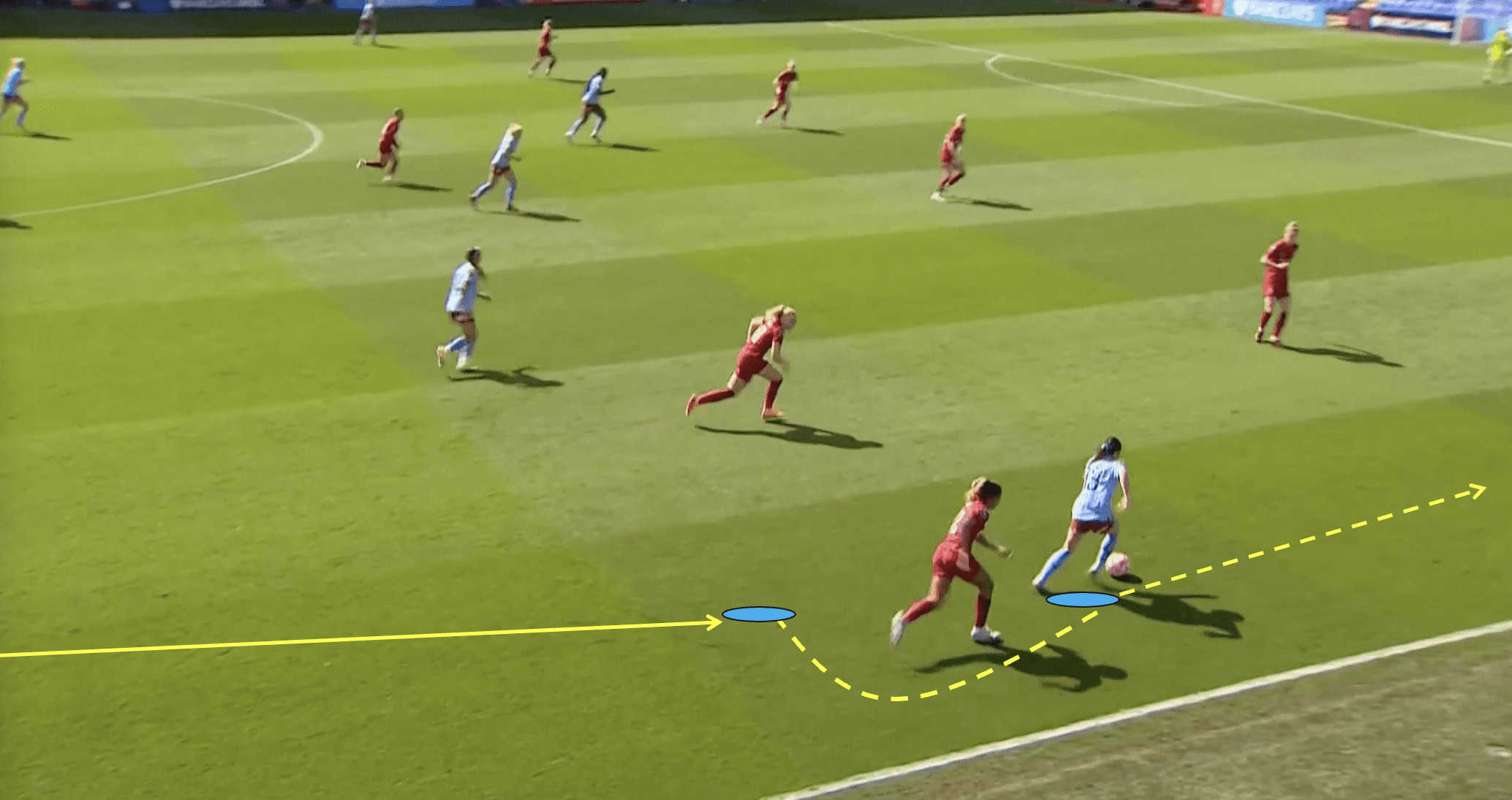
Here in Figure 1.1, we can see Raso has received the ball and quickly spun her marker, this enables her to use her speed and dribbling skills to carry the ball down the line while teammates make their way into the penalty area. When carrying the ball, Raso maintains a reasonably low centre of gravity which means that it is rather difficult for defenders to try and hassle her off the ball.
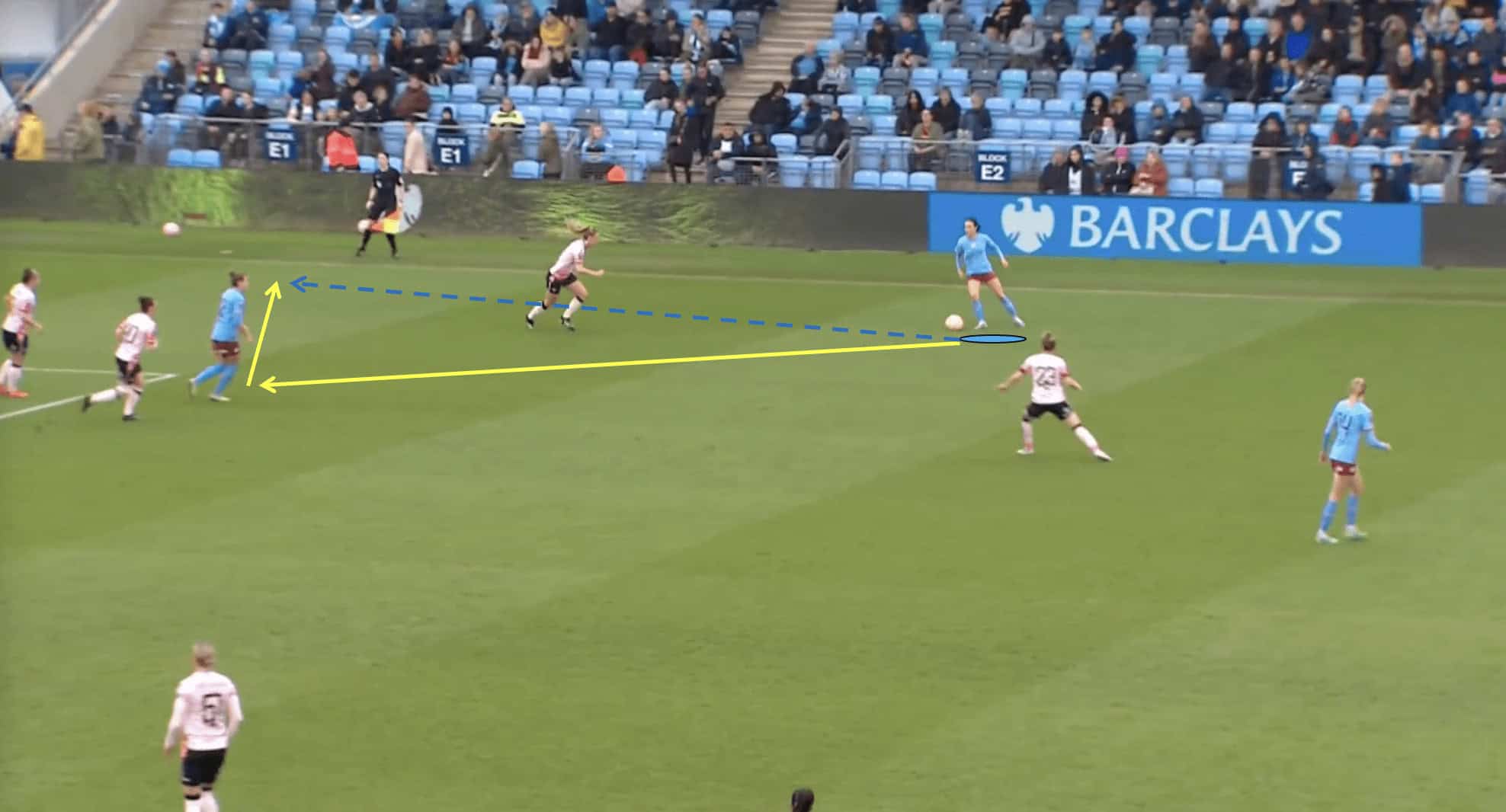
Here, we can see that Raso is able to link up well with her teammates. She is able to play a quick and accurate pass into her Manchester City colleague and then make a run down the line and receive the ball played back to her.
By engaging in effective link-up play, the winger Raso is able to receive accurate and timely passes from her teammates, allowing her to exploit the spaces in the opposition’s defence. This helps Raso to maintain possession, initiate attacks, and keep the flow of play moving forward. Furthermore, it allows the team to build coordinated and synchronised attacks, she can combine with other players to create intricate passing moves and unlock tight defensive lines as we can see in the image above.
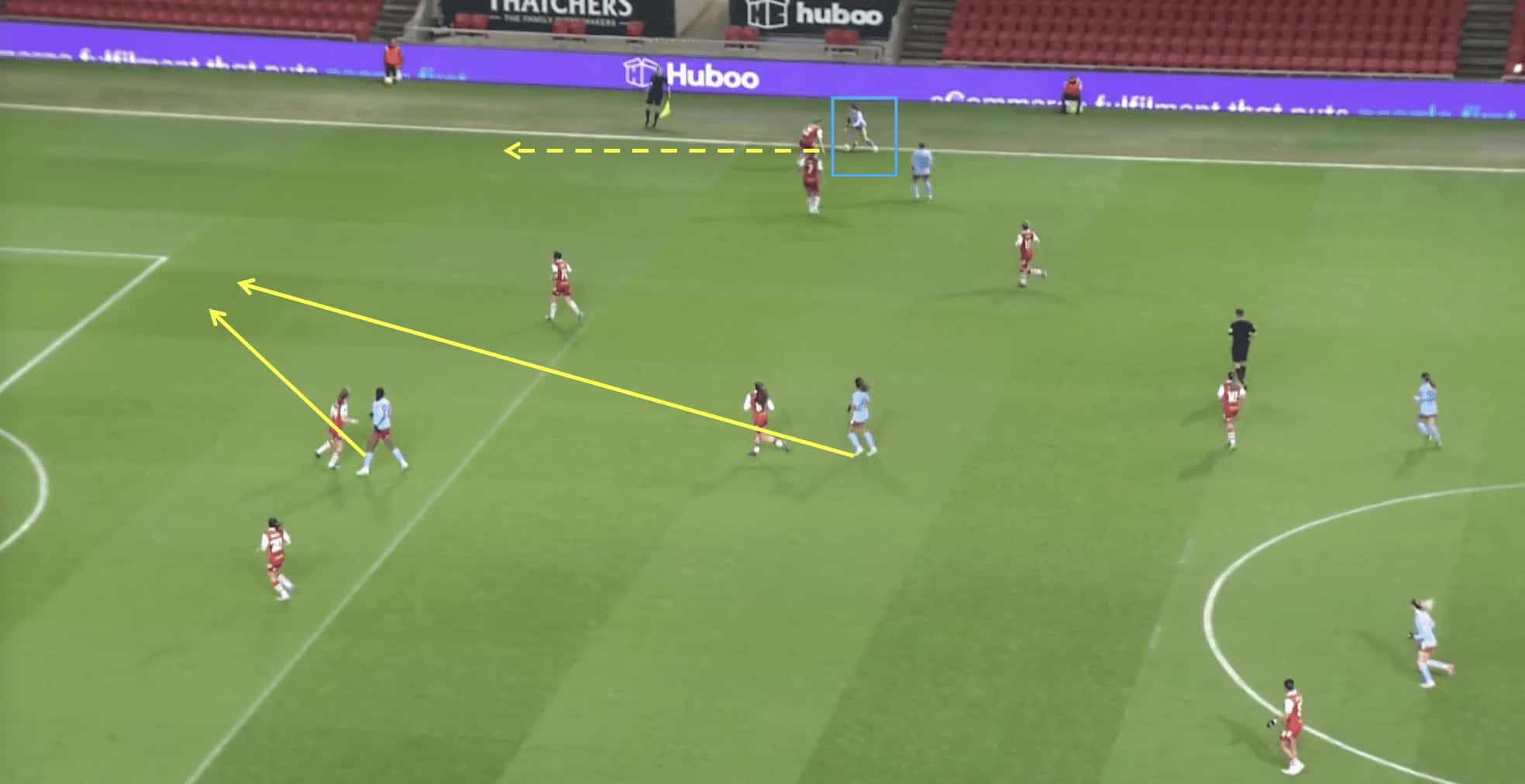
This is a good example of how Raso likes to stay as wide as possible and really allow others to run into space by drawing opposition defenders to her. We can see in Figure 1.3 that Raso staying out wide, virtually on the touchline, means that there is an opportunity for the likes of Bunny Shaw to run into the halfspace or run into the penalty area and await a cross from her.
Being positioned out wide offers Raso an opportunity to isolate and engage in direct duels with the opposing fullback as we can see. This allows her to exploit any mismatches in terms of speed, skill, or physicality, increasing the likelihood of successfully beating her marker and creating scoring chances.
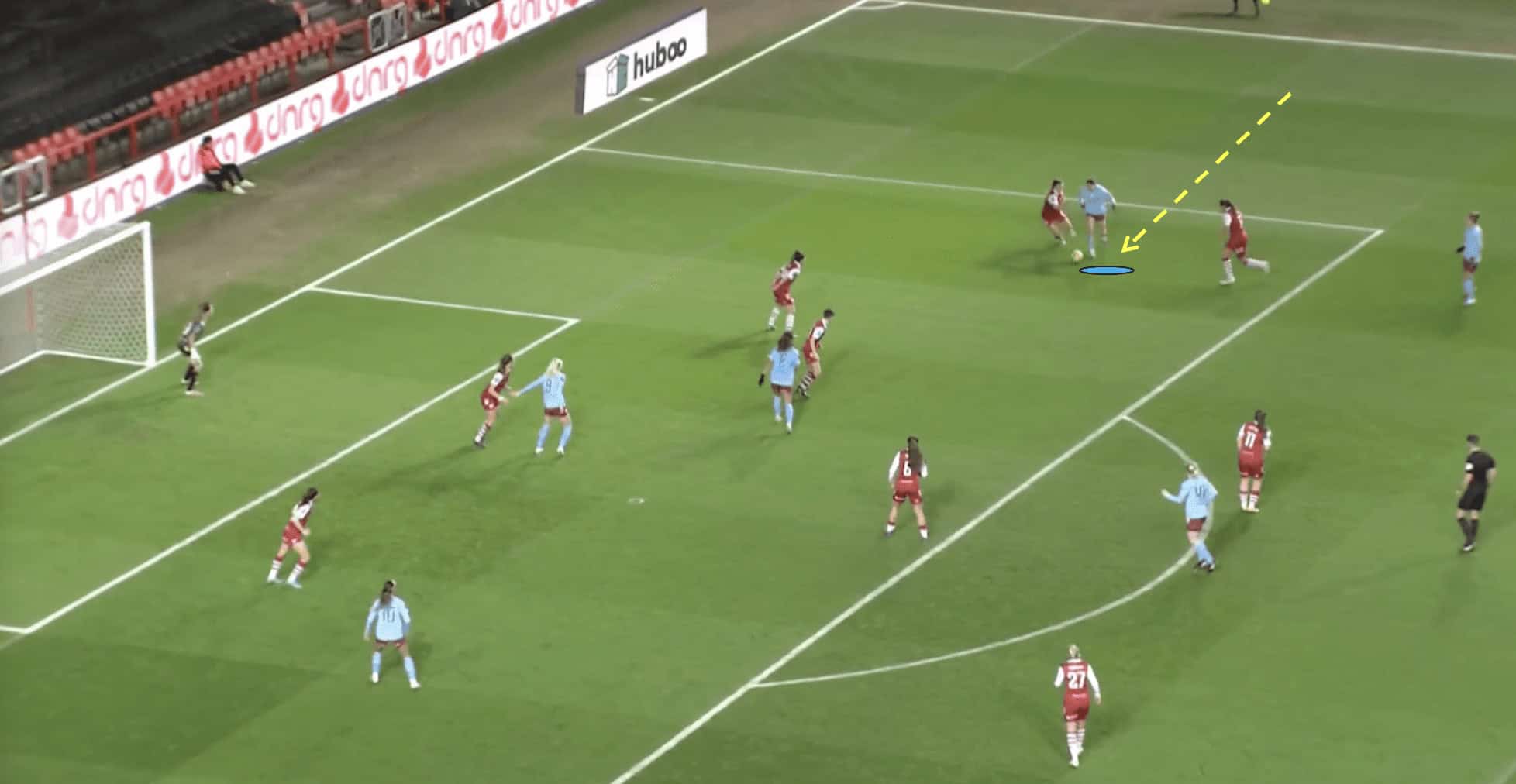
As we have established, Hayley Raso is very adept at carrying the ball, this means she is able to make penetrating runs into the penalty area from out wide, as shown in Figure 1.4. First and foremost, such carries allow her to directly challenge the opposition’s defence. By driving into the penalty area, Raso puts pressure on the defenders, forcing them to react and potentially commit to a tackle. This creates opportunities for her to either bypass the defenders with her excellent dribbling skills or potentially draw defenders into committing fouls.
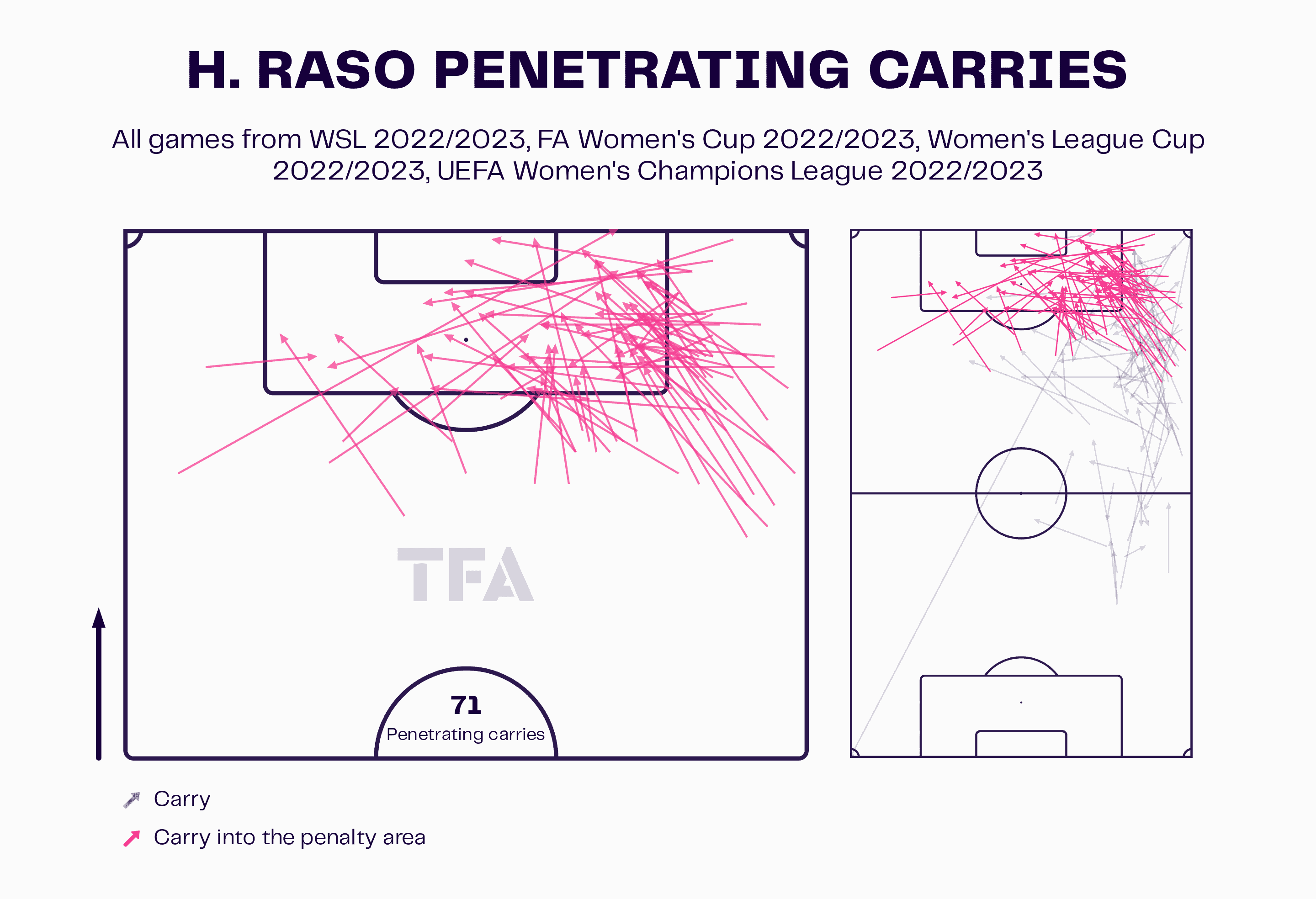
We can see from this data visual that, despite being limited to cup games and cameos from the bench, Raso has managed 71 carries into the penalty area this season, most of them coming from the right wing. This direct approach puts immense pressure on the opposition’s goalkeeper and defenders, potentially resulting in goals or rebounds from shots that can be capitalised on.
When it comes to crossing, she displays decent accuracy and precision. She mostly delivers well-placed crosses into the box, giving her teammates scoring opportunities, although this area could be improved upon. Her understanding of timing and positioning enables her to exploit gaps in the opposition’s defence and create dangerous chances.
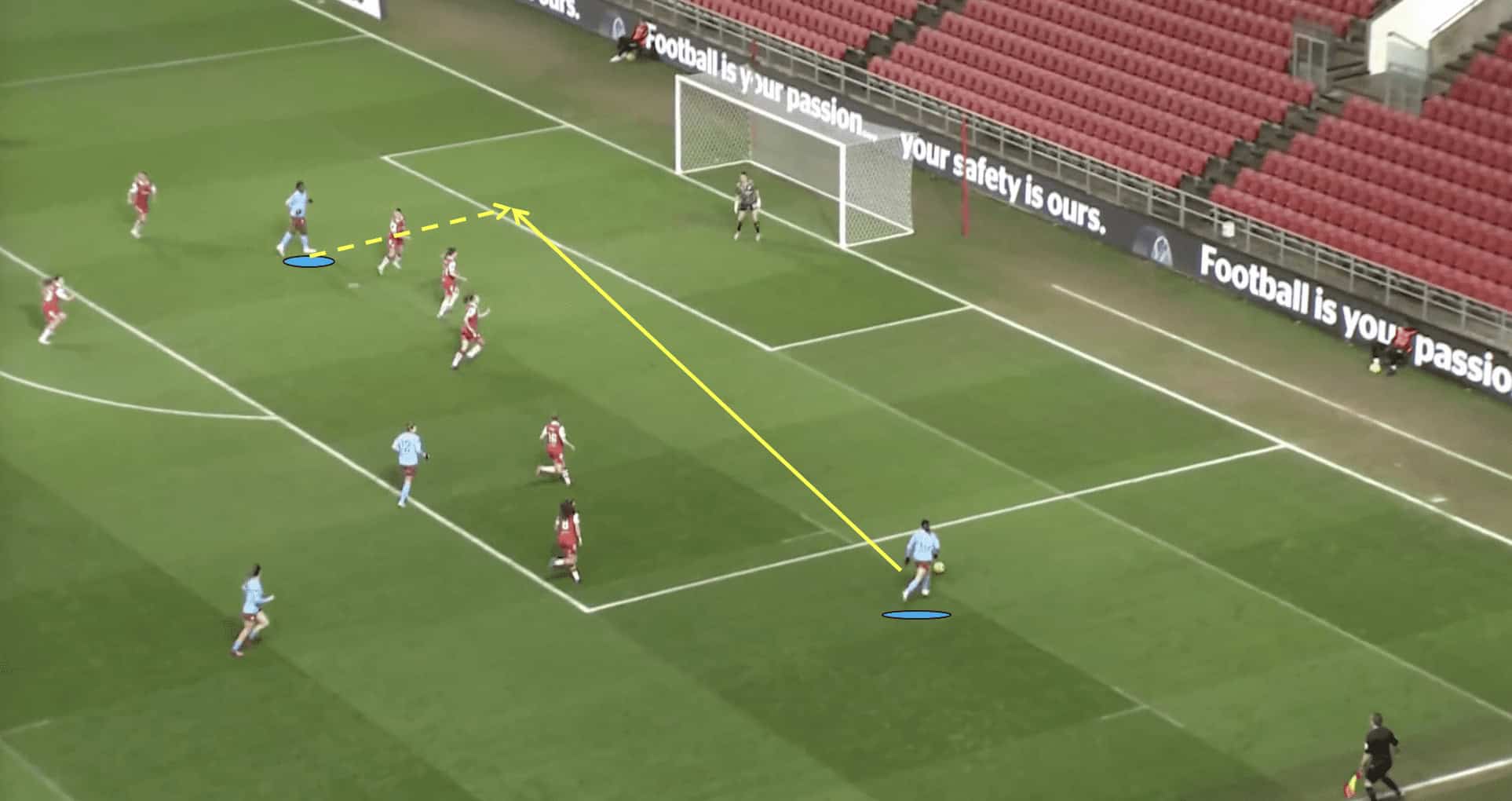
Here in Figure 1.5, we can see Raso has worked a lot of space for herself to put a cross in. Crossing is not her best attribute though, as only 30% of her crosses have been accurate this season.
From a defensive standpoint though, Raso’s work rate is commendable. She actively contributes to pressing opponents and disrupting their build-up play. Her speed allows her to cover a considerable amount of ground, making her a valuable asset in both tracking back and launching counter-pressing efforts.
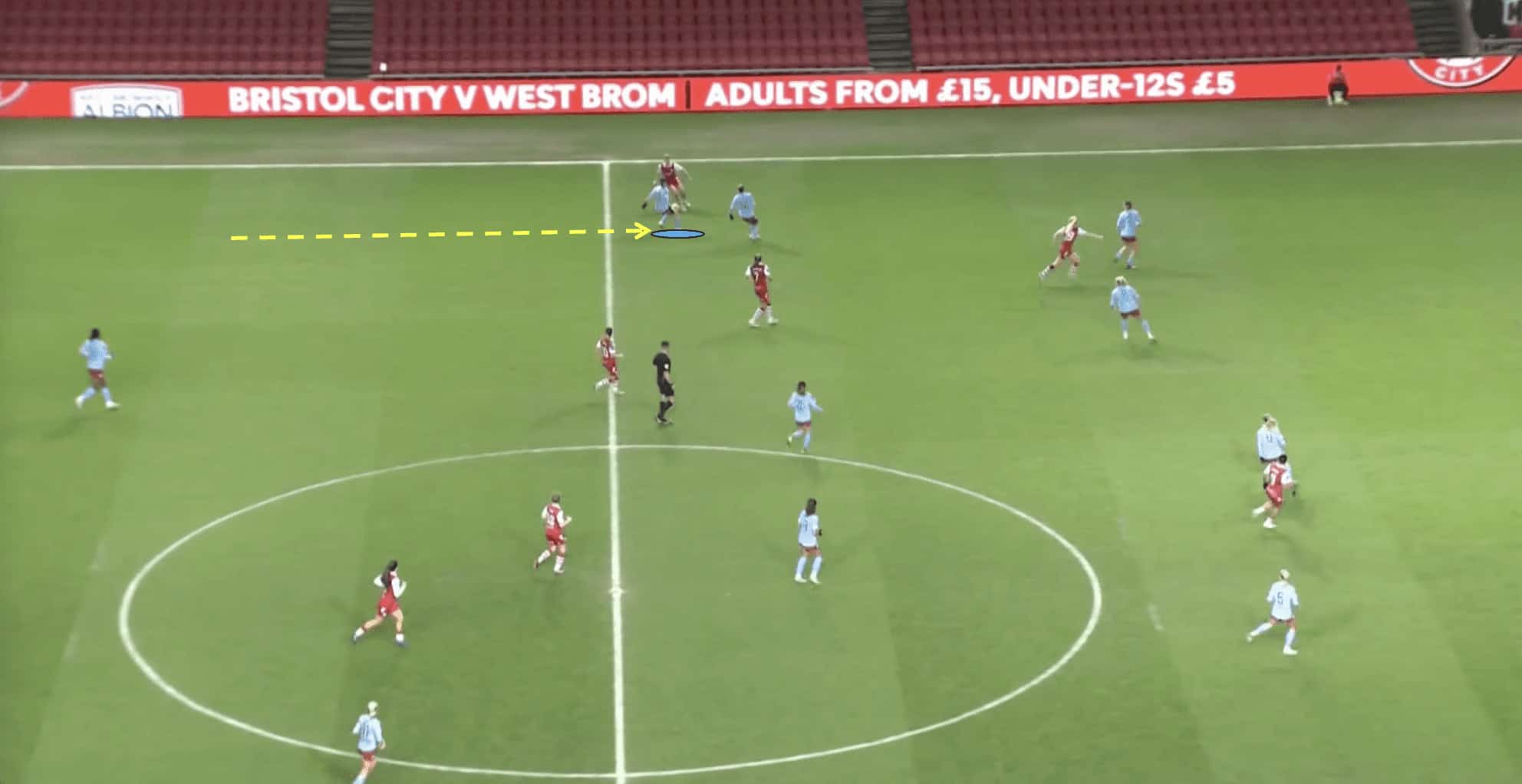
We can see here in Figure 1.6 that Raso is willing to do the hard work and track back in order to help out her teammates. By dropping deep and engaging in defensive duties, she helps maintain a solid defensive structure and prevents opponents from exploiting wide areas. This helps to balance the team’s defensive shape and reduces the risk of opponents launching dangerous attacks from the wing.
Secondly, Raso tracking back helps to disrupt the opposition’s build-up play. By applying pressure and closing down the opposing fullback or winger, she can force turnovers, interceptions, or even win back possession. This proactive defensive approach not only helps regain control of the ball but also disrupts the opponent’s rhythm and limits their attacking options.
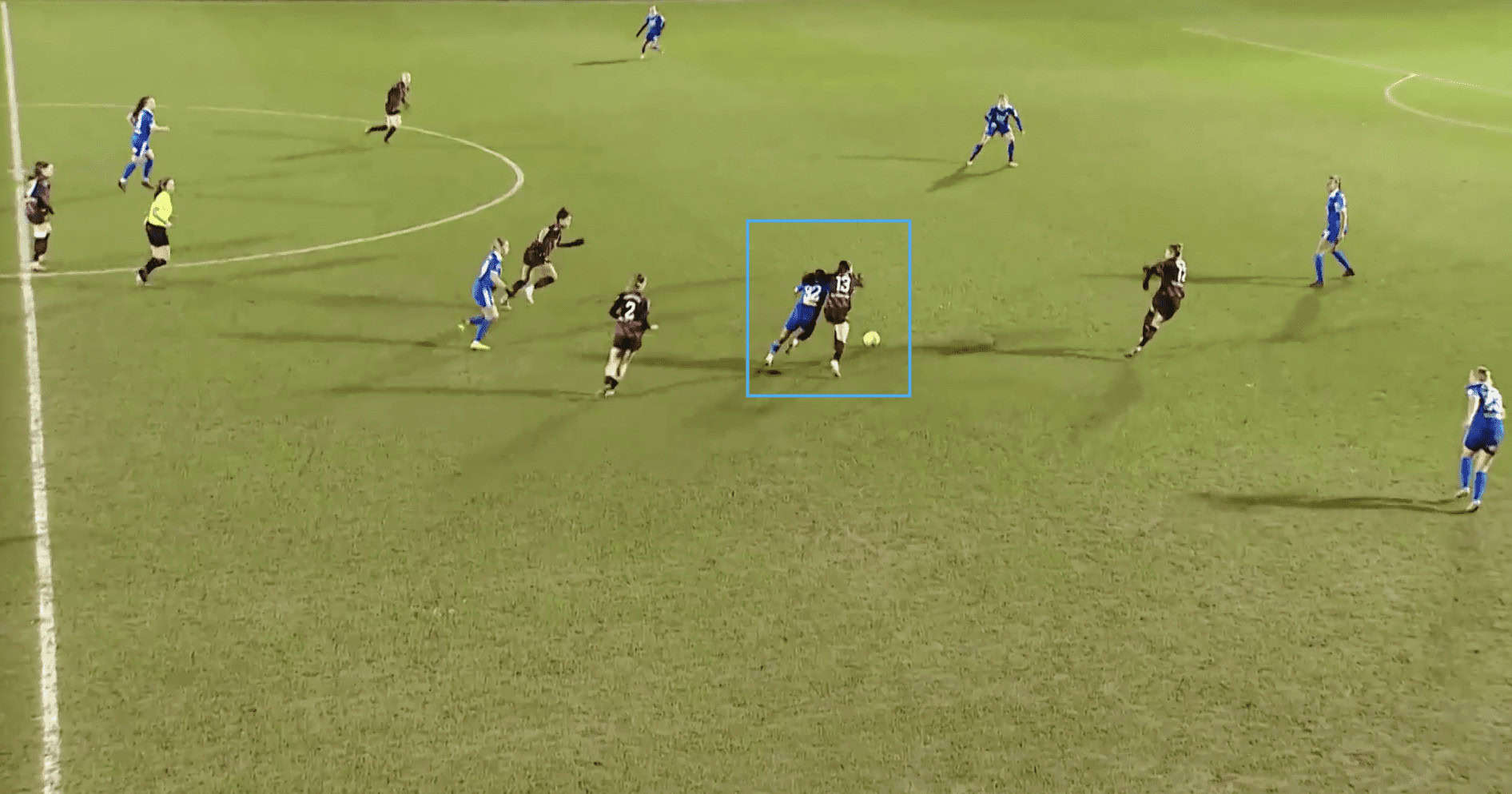
Additionally, Raso’s pace makes her extremely useful when her team is looking to press in order to recover possession. This means that she is able to quickly charge down opponents and win possession back high up the pitch which gives her team plenty of opportunities on the counterattack.
Real Madrid’s tactics

If we look at Real Madrid’s tactics this season, we can see from the graphic above that Alberto Toril has mostly favoured a 4-4-2 formation or a 4-2-3-1. During games, the two formations can be interchangeable based on Toril tactical adjustments or specific game situations. For example, they may start with a 4-4-2 formation to maintain defensive solidity and then switch to a 4-2-3-1 formation to reinforce midfield control and provide more attacking options. This flexibility allows them to adapt to the opponent’s tactics, exploit weaknesses, or make strategic changes to influence the flow of the game.
The interchangeability of the two formations is incredibly fluid, for instance, Toril may instruct the team to transition from a 4-2-3-1 to a 4-4-2 temporarily, pressing higher up the pitch and adding more attacking players to chase a goal. Similarly, a shift from a 4-4-2 to a 4-2-3-1 could be made to strengthen the midfield presence and retain possession during a phase of the game where defensive control is crucial.
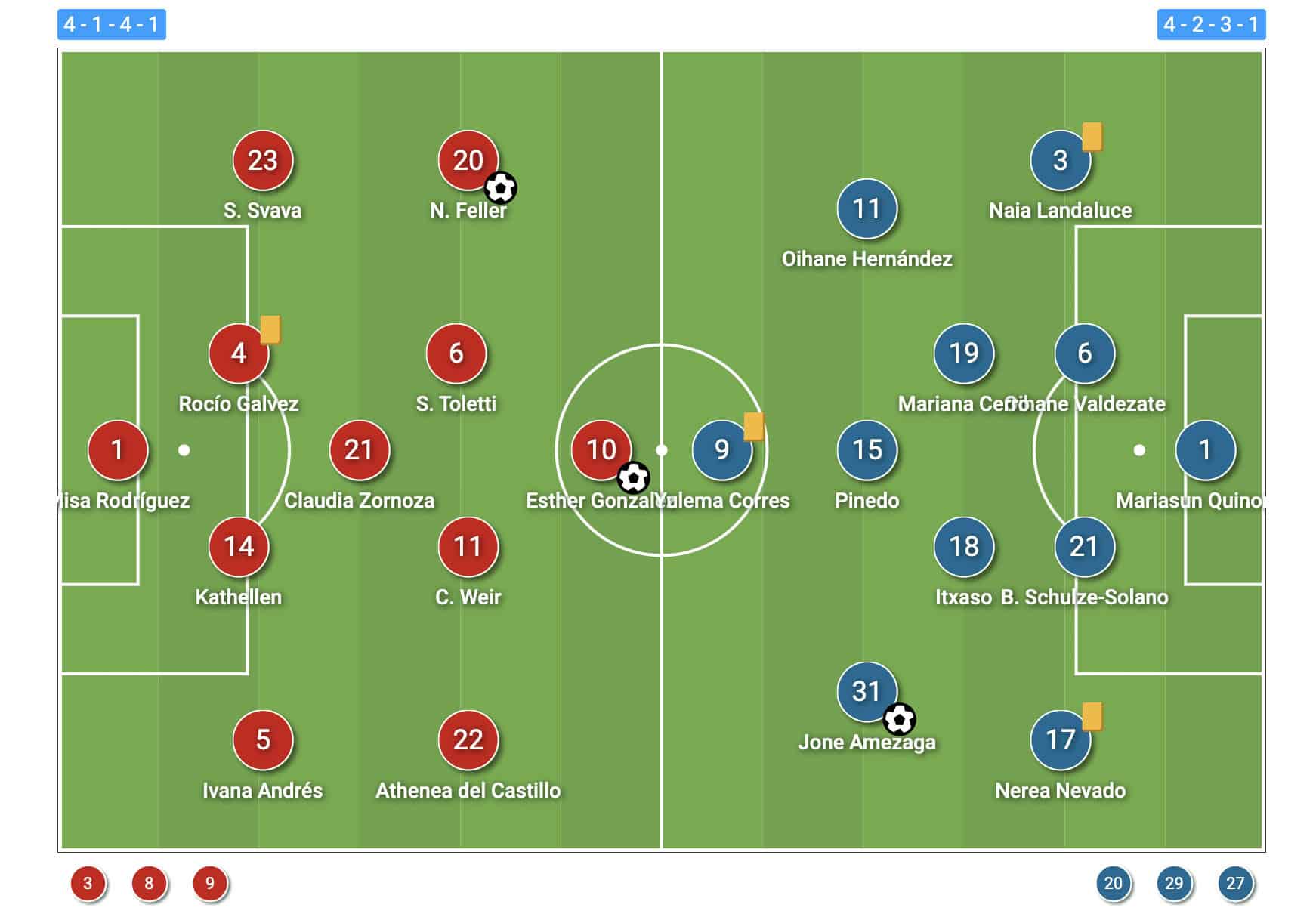
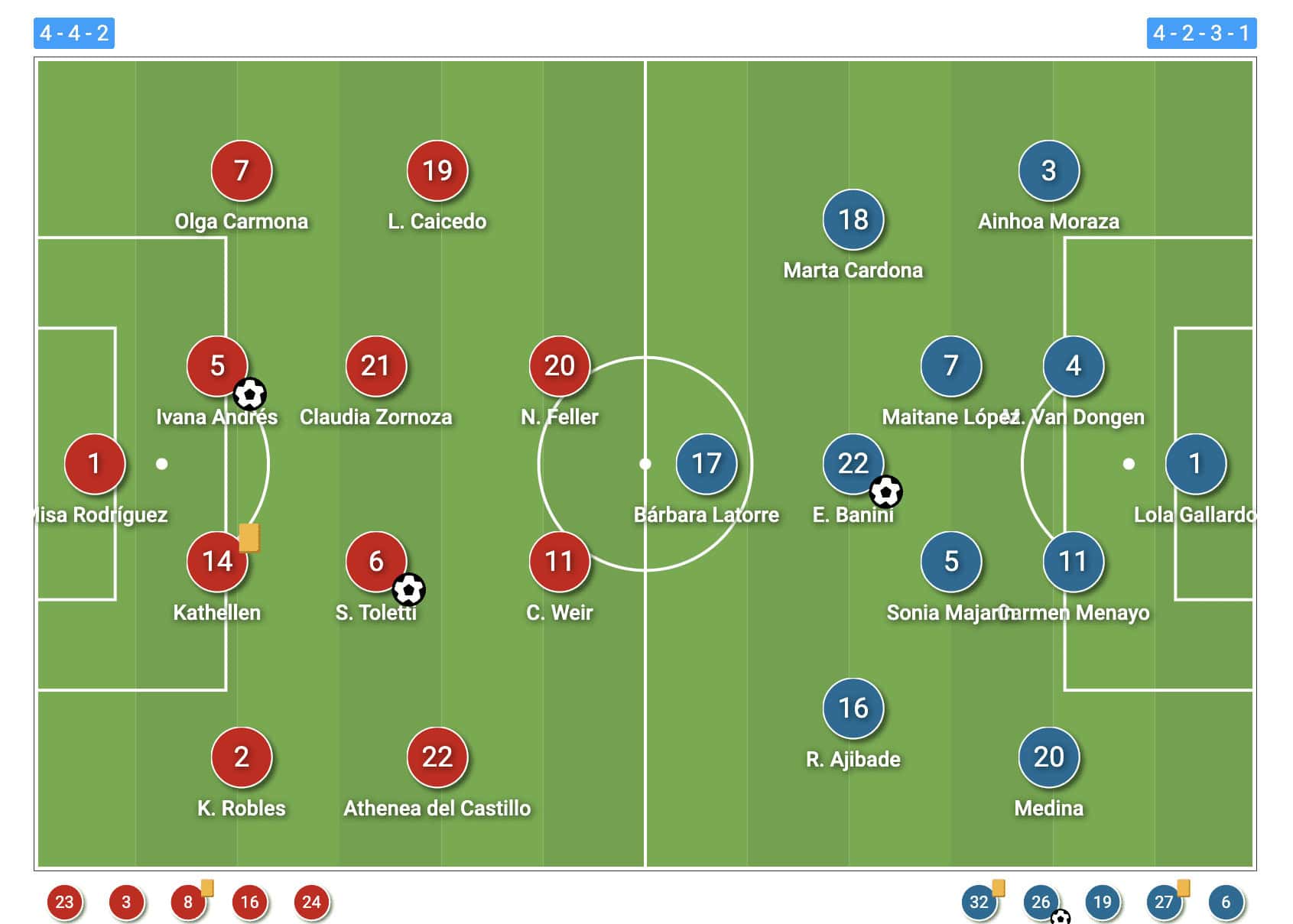
When examining the playing personnel, Real Madrid has often fielded Esther González, their leading goalscorer, as the central striker of the forward line. On the right wing, Athenea del Castillo has been a regular presence, while the left wing has been occupied by the talented French youngster Naomie Feller. In certain instances, when opting for a two-striker system, Feller has been shifted to play alongside González, or another player such as Caroline Weir, who is usually positioned in midfield, has been deployed as a makeshift forward. It is also worth noting that Athenea has occasionally featured as a centre forward throughout the season.
Real Madrid have averaged 59.73% possession this season so Raso would likely see a lot of the ball which would give her plenty of opportunities to be creative on the right wing. Additionally, their PPDA of 7.86 indicates they like to press reasonably high and quickly, something that means Raso’s pace could be incredibly useful to utilise.
Where will Raso fit in at Las Blancas?
Real Madrid’s recent announcement of Esther González’s departure has presented a challenging situation for the team during the summer transfer window. The impending arrival of Hayley Raso could potentially be connected to González’s exit, especially considering that Naomie Feller has the ability to play as the lone striker if Toril opts for a 4-2-3-1 formation next season.
On the other hand, Athenea del Castillo, who has predominantly played on the right wing, possesses the skills suited for the left side, allowing her to cut inside onto her right foot. This would create an opportunity for Raso to fill the vacant right-wing position upon her arrival.
Signe Bruun has been recently linked with a move to Toril’s side as a potential replacement for Esther González. Bruun has the versatility to serve as a lone central striker or operate in a front two within a 4-4-2 system and will also be on the hunt for regular game time after struggling for minutes at Lyon.
Considering Raso’s limited playing time in the past year, it is highly unlikely that she would make a move that would see her primarily on the bench. Thus, it is reasonable to assume that she will join Real Madrid with the expectation of being a regular in the team’s starting eleven.
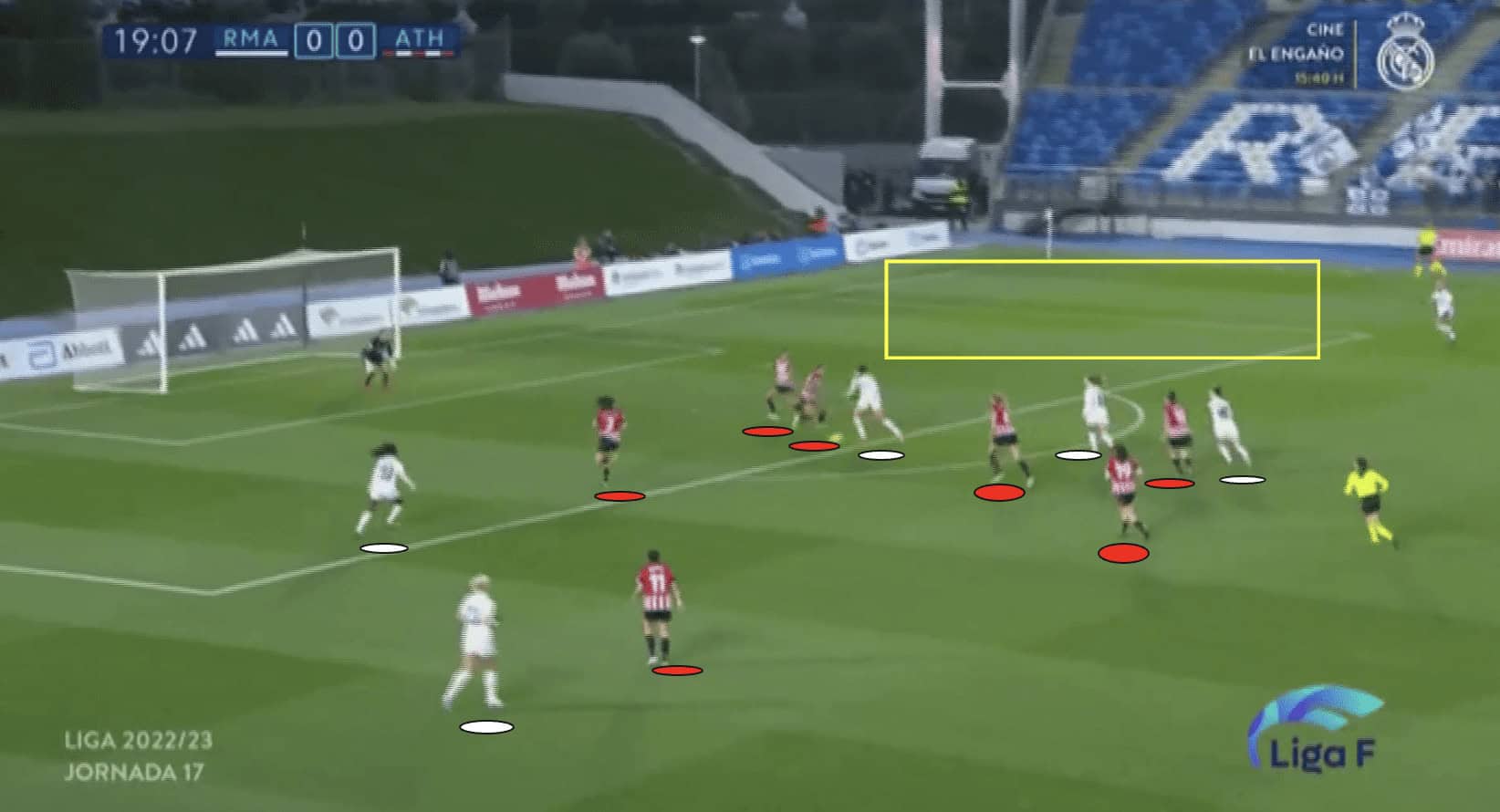
As discussed earlier, one thing that Raso will provide Real Madrid with is plenty of opportunities to utilise the wider areas. On occasion, the attack can become very narrow which of course can lead to a vast number of players in the central areas, making it very difficult for Las Blancas to play their way through, as shown above. Raso would most likely remain a little wider in this scenario which of course would draw one or two defenders and make it easier for Real Madrid to carve out a goal-scoring opportunity, such as the ball could be played out to her and she would then be able to whip in a cross.
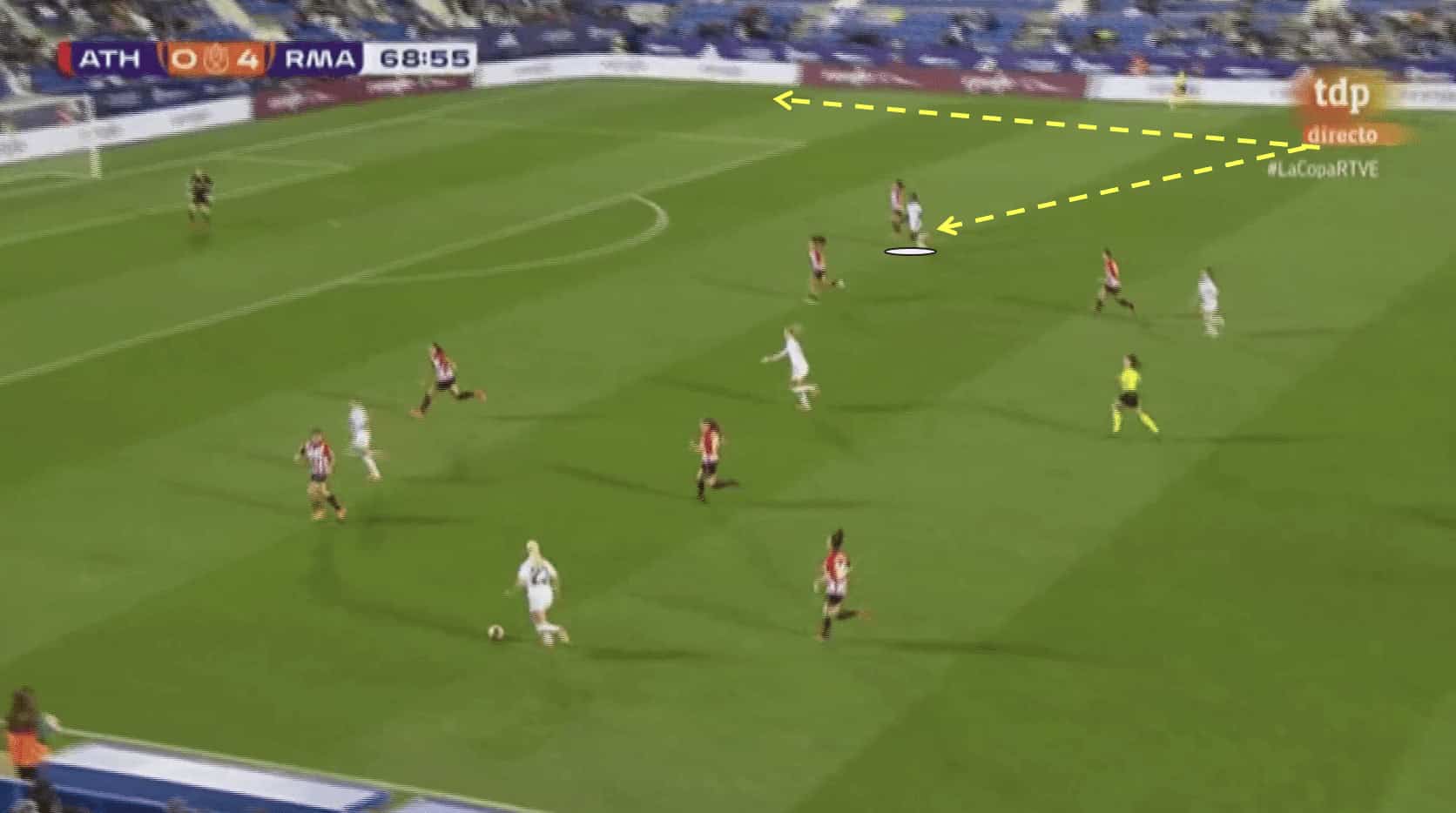
Here, we can see that Feller has made an inverted run from the right wing, it is highly unlikely that Raso would do this, she much prefers to stay in the wide areas and allow others to make runs from more central areas, behind the defensive line. With her wonderful dribbling ability and speed, Raso would also be more than capable of being the conduit as Real Madrid Femenino look to transition from defence to attack which is the scenario being shown above.
Conclusion
Hayley Raso’s time at Manchester City has been challenging this season, as she did not receive the significant amount of playing time that her quality deserves. Real Madrid’s acquisition of Raso on a free transfer could be a clever move. Adding her to their squad will bring another dimension to their attacking play, thanks to her exceptional skills on the ball and remarkable work ethic.
After a difficult second season in Manchester, the move to the Spanish capital could be the perfect opportunity for Hayley Raso to remind the women’s football world of her talent.





Comments